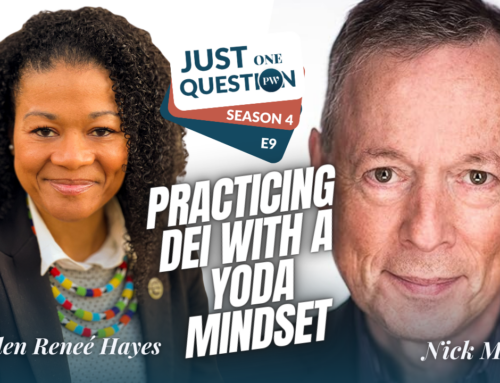I blog a good deal on non-verbal communications because every communication is two conversations, the verbal and the non-verbal. When those two are aligned, you can be an effective communicator. When the two are not aligned, people believe the non-verbal always. That makes the non-verbal conversation extremely important – a show-stopper, in fact, for someone giving a speech.
But let’s say you’re passionate about your topic, you’ve rehearsed, and you are open to the audience. In short, the speech goes well in non-verbal terms. OK, all of that is ‘table stakes’. In order to get a message through to the audience, you still have to put the content together in ways that the audience can hear it.
One of the most important ways in which you can increase your verbal power – and the audience’s comprehension – is to use rhetoric that works well on the ear. It’s difficult to assimilate information through the ear. We only remember 10 – 30 percent of what we hear as audience, so it’s up to you, the speaker, to make it as easy as possible for us.
And the single most important rhetorical device you can use is the ‘Rule of Threes’. What is it? I’ve already used it in this (written) blog – look at the first sentence of the second paragraph. When you give people a series of items, always make sure there are three items in the series.
Why is this so important? It’s a psychological thing – groups of three sound complete to us. In this way, you will sound authoritative, and the audience will listen more closely to what you’re saying, and remember it better.
There’s a comical instance of this rule that shows how powerful it is. The great orator Winston Churchill, speaking to the House Commons just after he had been appointed Prime Minister as WW II was getting underway, on May 13, 1940, said: “I would say to the House, as I said to those who have joined the Government, ‘I have nothing to offer but blood, toil, tears and sweat.’”
So popular was the line that the public took it up and turned it into ‘blood, sweat, and tears’, and that is the way it was remembered. And, indeed, a pop group was formed with the name in the 1960s, Blood, Sweat and Tears. Thus the power of the rule of threes.
Churchill’s remark came in a speech that had an even better line: “You ask, What is our aim? I can answer in one word: Victory – victory at all costs, victory in spite of all terror, victory, however long and hard the road may be; for without victory, there is no survival.” Here, he obeys the rule of threes, in spite of the fact that he repeats the word ‘victory’ five times in the sentence, because the structure of it is framed around the three repetitions of the word.
Use the rule of threes whenever you can. Your audiences will find it satisfying, authoritative, and compelling.








Leave A Comment